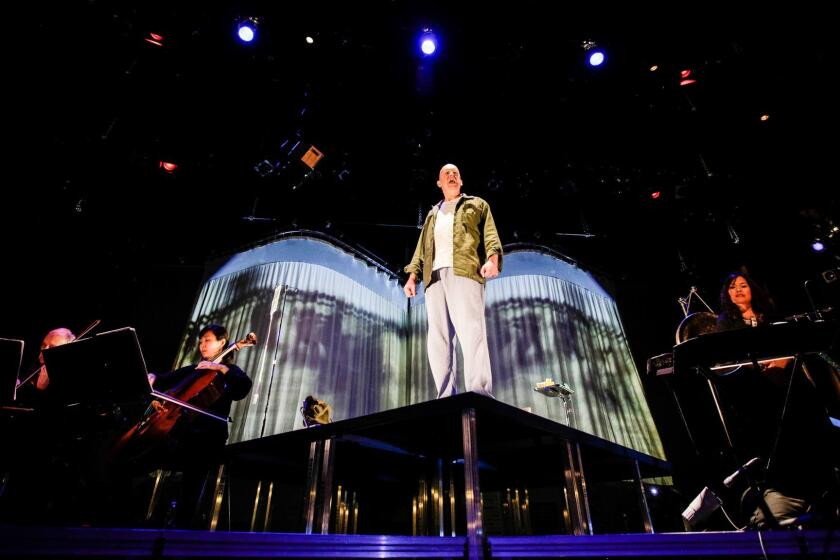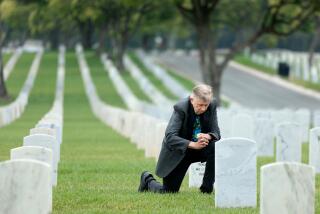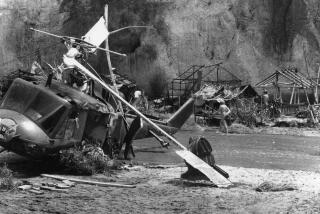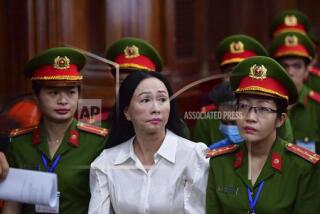William Calley, convicted U.S. soldier in My Lai massacre in Vietnam, dies
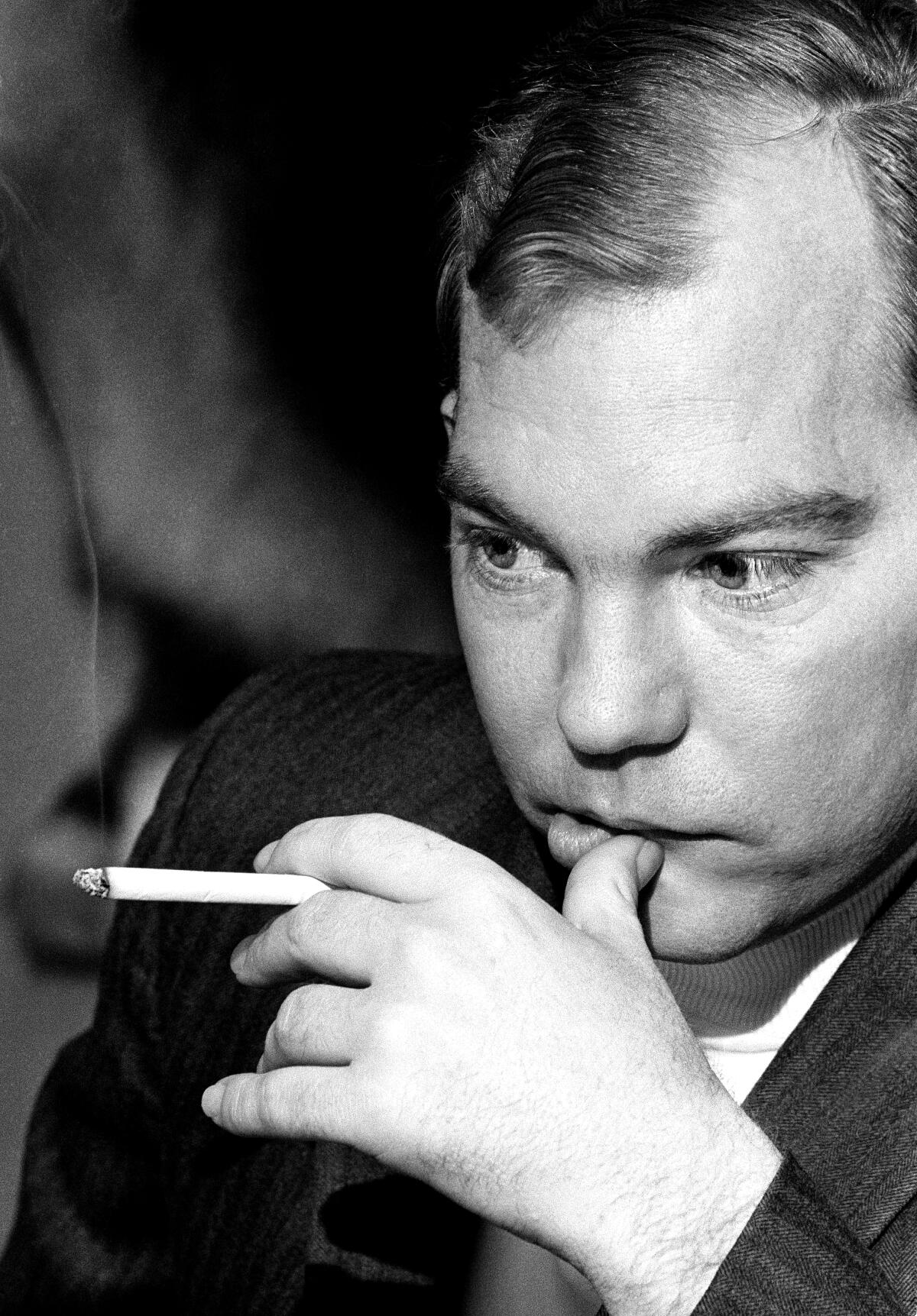
The night before 2nd Lt. William Calley shipped out of Hawaii to Vietnam, he was obliged to read his unit a list of rules regarding their behavior in a new land.
The men were arrayed in a horseshoe around the 5-foot-3, boyish-looking officer as he recited the doâs and donâts from the Pentagon publication âVietnam, Our Host.â In his 1971 memoir, he remembered items such as âDo not insult the women ⌠do not assault the women. And â Iâm too foggy about it. Items like âBe polite.ââ
âI had only three minutes for Vietnam, Our Host,â he wrote. âI did a very, very poor job.â
Three-and-a-half months later, 24-year-old âRustyâ Calley was at the center of the My Lai massacre, one of the darkest chapters in U.S. military history. In a hamlet that reputedly had been a Viet Cong stronghold, Calley and the men he commanded shot, stabbed, raped, and hurled hand grenades at hundreds of residents later deemed to be unarmed civilians â mostly women, children and elderly men.
Calley, who was convicted of murder in a 1971 court-martial that was widely seen as a trial of the Vietnam War itself, died on April 28, according to his Florida death record, which said he had been living in an apartment in Gainesville. He was 80.
After My Lai, Calley was sentenced to life at hard labor. However, owing to the intervention of President Nixon, he served only a few months in prison before being released to house arrest. During three years of appeals, he lived in a bachelor-quarters apartment at Ft. Benning, Ga.
Military authorities and then Secretary of the Army Howard Callaway reduced his sentence to 20 years, and then 10. In 1974, he was paroled.
Charles Mansonâs sentencing and the conviction of Lt. William Calley for the My Lai massacre underscored roiling tensions in America.
By then, Calley had gained millions of supporters. The White House was flooded with more than 300,000 letters and telegrams denouncing his life sentence. A Gallup poll indicated that 79% of Americans believed he had been made a scapegoat.
After his conviction, a popular song based on âThe Battle Hymn of The Republicâ â âThe Battle Hymn of Lt. Calleyâ â sold more than a million records: âMy name is William Calley / Iâm a soldier of this land / Iâve tried to do my duty and to gain the upper hand / But theyâve made me out a villain / They have stamped me with a brand / As we go marching on âŚâ
Even some leaders of the antiwar movement thought Calley had been treated unfairly. âItâs too bad that one man is being made to pay for the brutality of the whole war,â said Dr. Benjamin Spock, the late activist and pediatrician whose books were child-raising bibles for frazzled American parents.
In his memoir, Calley portrayed himself as an easy target for officials trying to sanitize the unpopular war. Once the story of My Lai emerged, âthe American government couldnât say, âOh, thatâs how it is in Vietnam, everyone,ââ He wrote. âIt had to protect two million veterans and 200 million Americans. It had to tell everyone, âA mad killer did itâ.â
On March 16, 1968, Calley led one of the three platoons of Charlie Company into the village known by U.S. military planners as My Lai 4. Four hours after their arrival, most of the villagers were dead. At least nine girls and women had been raped and mutilated. âZippo squads, using their cigarette lighters to ignite thatched rooves, burned down 246 homes. Bodies were dumped down wells. Even the livestock was shot.
At the My Lai museum outside Da Nang in Vietnam â formally known as the Son My War Remnant Site â a marble plaque lists 504 victims by name. Of the 273 women killed, 17 were pregnant. One hundred and sixty victims were 4 to 12 years old and 50 were 3 years old or younger.
Roughly 100 U.S. soldiers from Charlie Company swept into My Lai on March 16, 1968. They met no enemy fire and saw no Vietnamese males of fighting age. They suffered only one casualty â a GI who shot himself in the foot. All of three enemy weapons were recovered.
March 16, 1968. My Lai, Vietnam. 504 dead. All civilians. The killers? U.S. soldiers.
Calley ordered his soldiers to aim their M-16 assault rifles into a drainage ditch where dozens of villagers were huddled, pleading for their lives. The only survivors were those shielded from bullets by the layers of bleeding bodies above. Calley fired into the pit, as well as into a group of captured villagers squatting on a trail. He was initially charged with murdering 109 civilians.
When he saw a white-robed Buddhist monk praying over a prostrate elderly woman, he jammed his rifle butt into the monkâs face. After the monk crumpled, insisting he wasnât Viet Cong, Calley shot him anyway. A little later, he saw a small boy crawl out of the pit. Calley grabbed his arm, tossed him back in, and shot him too. The boy was 2.
In his memoir, Calley said the publicâs outrage about slain babies was misplaced.
âOn babies everyoneâs really hung up,â he wrote. ââBut babies! The little, innocent babies!â Of course, weâve been in Vietnam for 10 years now. If weâre in Vietnam another 10, if your son is killed by those babies, youâll cry at me, âWhy didnât you kill those babies that day?ââ
Seven of Calleyâs men refused to follow his orders but most complied. Ultimately, charges were filed against 25 men, including officers who engineered the subsequent cover-up. The cases against most were dropped. Of the six men tried, only Calley was convicted.
At a 50-year anniversary forum on My Lai, former military judge Gary Solis called it âan epic failure of military justice.â
âI believe the convening authorities just wanted the whole damn My Lai case to go away,â said Solis, a former court-martial prosecutor who taught military law at West Point. âThey didnât want the American public to know the full extent of criminality exhibited by U.S. personnel in My Lai and undermining Americaâs ongoing war effort.â
Born June 8, 1943, William Laws Calley Jr. was the son of Ruth and William Calley. He grew up with three sisters in Miami, where his father had a construction business.
An indifferent student, Calley was sent to a military school before graduating from a public high school in 1962. He attended Palm Beach Junior College for a year, held a series of odd jobs, and in 1967 enlisted in the Army as the Vietnam War was in full swing.
For decades after his release, Calley managed a Columbus, Ga., jewelry store owned by his wifeâs family. He had married Peggy Vick in 1976 at a wedding with 200 guests, including a U.S. district judge who had overturned his conviction but was later overruled. The Calleysâ son, William Laws Calley III, went on to become an electrical engineer in Atlanta.
The Calleys divorced after 30 years and he later moved to Florida.
Refusing countless requests for interviews, he broke his silence with a public apology in 2009.
At a friendâs invitation, he spoke at a Kiwanis Club of Greater Columbus lunch.
âThere is not a day that goes by when I do not feel remorse for what happened that day in My Lai,â he said, his voice breaking. âI feel remorse for the Vietnamese who were killed, for their families, and for the American soldiers involved and their families. I am very sorry.â
Asked whether following an unlawful order is itself unlawful, Calley said he believed it was, according to an account in the Columbus Ledger-Enquirer.
âIf you are asking why I did not stand up to them when I was given the orders, I will have to say that I was a second lieutenant getting orders from my commander and I followed them â foolishly, I guess,â he said.
At his court-martial, Calleyâs attorney echoed the defense of top Nazis at their trials in Nuremberg following World War II: He was only following orders.
The day before the attack, Capt. Ernest Medina had gathered the troops of Charlie Company, which he commanded. Most of the men were still relative newcomers to Vietnam but 20 soldiers â about 10% of the company â had been wounded or killed by buried landmines. Just days before the attack, a popular sergeant had been blown apart by a booby trap that took another soldierâs arms and legs and blinded a third.
Weeks earlier, Calley and others had been kept awake by the sound of screams. At dawn, they discovered the body of a U.S. soldier hoisted on a pole. He had been skinned alive.
Medina told his troops that the next morning theyâd be storming My Lai, where intelligence officials had located several hundred members of the crack Viet Cong 48th Local Force Battalion. Because the attack would be on market day, he said, the village would be empty, except for the VC fighters holed up there.
âOur job is to go in rapidly, and to neutralize everything,â Medina told his troops. âTo kill everything.â
Asked whether he meant women and children too, Medina, a tough career officer known to his men as âMad Dog,â was blunt, Calley recounted.
âI mean everything,â he said.
Calleyâs account was both supported and disputed by other witnesses. Medina denied it and was acquitted after jurors deliberated for 58 minutes.
Still, Calley said he believed he and his men were under orders to kill anyone they saw as a threat â and women and children had been known to plant landmines, set booby traps and hide Viet Cong fighters. Calley also said he was under pressure from his commander, who told him in angry radio transmissions to âwasteâ the villagers if they got in the way. The action was to be the first to rout the Viet Cong in My Lai and nearby villages.
âAfter Medina blasted him for threatening the mission, Calley made the most momentous decision of his life,â wrote historian Howard Jones in âMy Lai: Vietnam, 1968, and the Descent into Darkness,â his 2017 account of the massacre. âSince it was impossible to distinguish between friend and foe, the only conclusion was to presume that all Vietnamese were Viet Cong and kill them all.â
It later was determined that the Viet Congâs 48th Battalion had been regrouping in the mountains miles away. The intelligence had been wrong.
âWhere in Godâs name is the medic?â the dying hospital patient demands.
The carnage at My Lai stopped only after helicopter pilot Hugh Thompson looked down and saw U.S. soldiers picking off people in the body-strewn ditch and elsewhere. After a futile confrontation with Calley, Thompson landed his chopper between a group of fleeing Vietnamese and the soldiers closing in on them. He also summoned another chopper to evacuate wounded women and children.
Warrant Officer Thompsonâs superiors shrugged off his reports as the impressions of âan excitable young man.â However, he and his two crew mates were honored 30 years later with the Soldierâs Medal, the Armyâs top award for âheroism not involving conflict with an armed enemy.â
Shortly after My Lai, Calley was promoted to first lieutenant and went on to serve 15 more months in Vietnam. Tiring of combat, he took a job in Vietnam as a community affairs officer, starting a sewing class for ex-prostitutes and teaching children how to use soap.
âI had a beautiful thing with the Vietnamese people,â he wrote.
Meanwhile, word of the massacre leaked.
While it initially was publicized as a significant U.S. victory, with 128 Viet Cong soldiers killed after a fierce, daylong gun battle, the true story was discovered by Ronald Ridenhour, a soldier who pieced the real version together after conversations with men who had been there.
Ridenhourâs letter to military and political leaders prompted probes by Congress, a Pulitzer-winning investigation by journalist Seymour Hersh, and an inquiry led by Lt. Gen. William R. Peers. After hundreds of interviews, Peers recommended courts-martial for Calley and 24 others, including Maj. Gen. Samuel W. Koster, who had left Vietnam to become superintendent of the U.S. Military Academy at West Point. Charges against Koster, who was accused in the cover-up, were later dropped.
Calley was charged on Sept. 5, 1969 â one day before he would have been discharged and thus immune from war crime prosecution. Eventually, prosecutors winnowed down his 109 alleged murders to 22.
After his conviction, he rose to address the jury, moving from a lectern that was too high to a lowered microphone.
His voice quaking, he said: âIâve never known a soldier, nor did I ever myself â ever â wantonly kill a human being in my entire life.
âIf I have committed a crime, the only crime that Iâve committed is, in my judgment, of my values: Apparently I valued my troopsâ lives more than I did that of the enemy.â
Steve Chawkins is a former Times staff writer.
More to Read
Start your day right
Sign up for Essential California for the L.A. Times biggest news, features and recommendations in your inbox six days a week.
You may occasionally receive promotional content from the Los Angeles Times.
